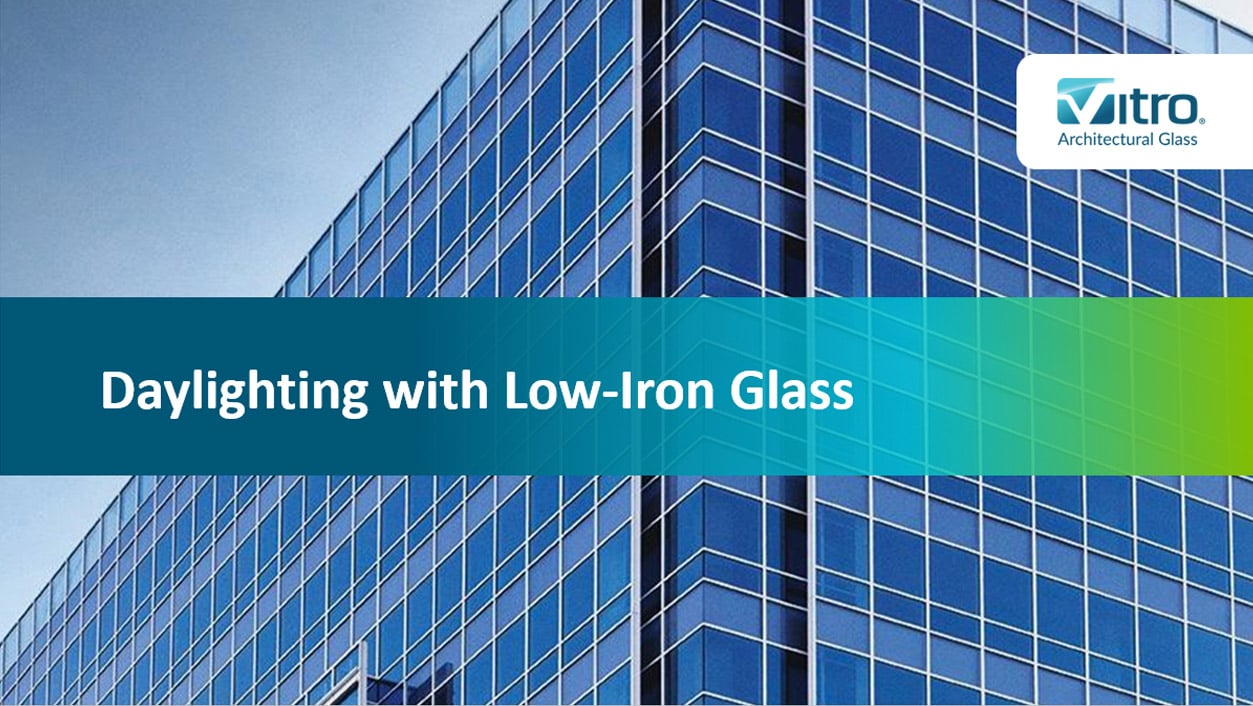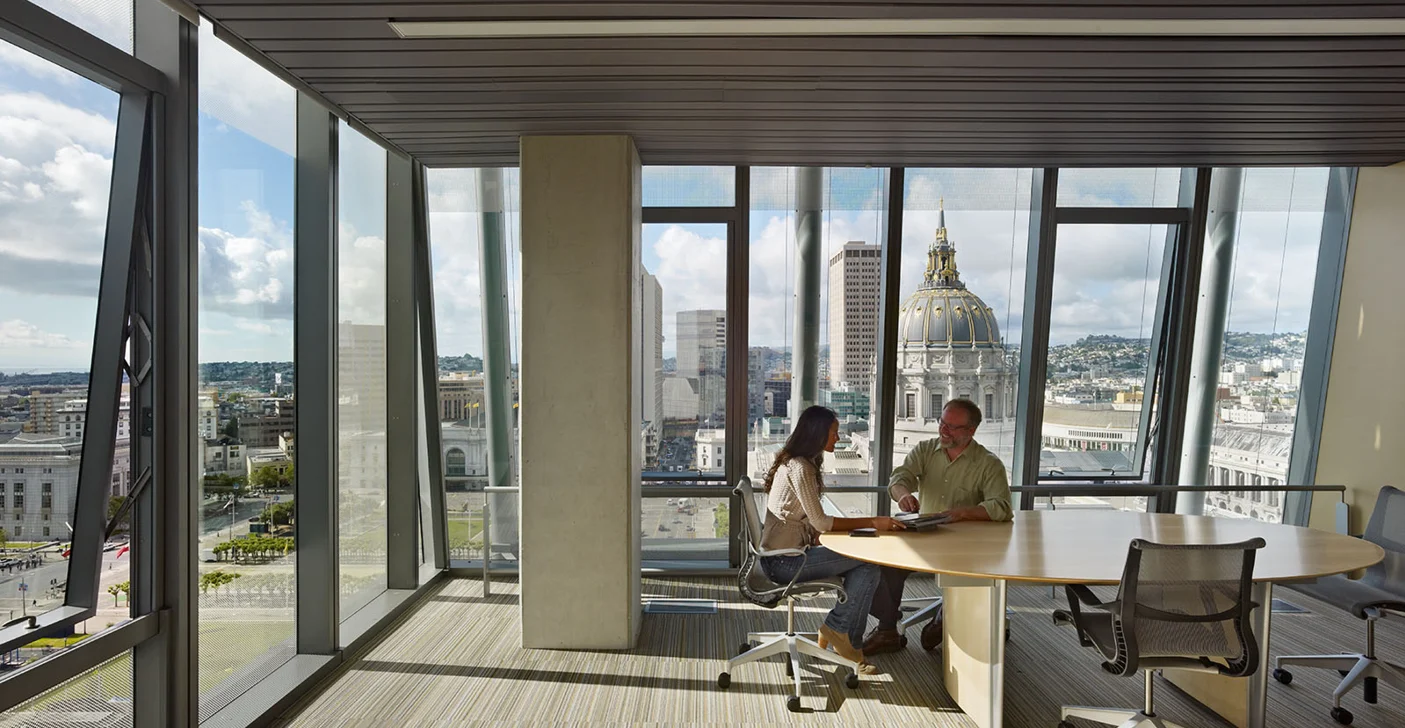Well-daylit interiors boast a range of benefits, such as occupant mood and productivity, a sense of connectivity between spaces, decreased use of artificial light and energy bills, stunning views to the outdoors and dazzling color transmission.
Specifying a low-iron glass is one of the most impactful daylighting solutions. Low-iron glass is made with a low-iron formulation that gives it heightened levels of clarity and transparency compared to traditional clear glass. However, because there is no ASTM specification for low-iron glass, clarity levels can vary widely based on how they are manufactured and the levels of iron found in their formulae. For this reason, some low-iron glasses may be more appropriate for your project than others.
What other considerations should you keep in mind when specifying a low-iron glass to improve daylighting in commercial spaces?
More Glass Means More Daylight
One of the most common ways to increase daylighting today is to use large expanses of glass, sometimes categorized as “jumbo glass.” Jumbo insulating glass units typically range in sizes from 130 inches by 204 inches up to 130 inches by 236 inches. Larger sizes can be available for special orders.
Using low-iron glass as opposed to conventional clear glass in jumbo insulating glass units (IGUs) can maximize light transmittance for your project while creating brilliant views to the outdoors. However, specifying jumbo glass might result not only in increased daylight, but also increased solar heat gain. To improve solar control performance, optimize energy usage and reduce reliance on artificial lighting, jumbo coated glass is available with low-e coatings.
Thickness Impacts Light Transmission
The thickness of glass is also a consideration when your design objective is maximizing daylight. The inherent green tint of conventional clear glass is amplified as thickness increases. However, with low-iron glass, that amplification is less pronounced.
For reference, consider the performance data below and note how conventional clear glass loses 7 percent VLT when going from 1/8 inch to ¾ inch, while a premium low-iron glass only loses 1 percent.
| Glass | Thickness (inches) | Visible Light Transmittance (VLT) |
|---|---|---|
| Clear Glass | 1/8 | 90% |
| Clear Glass | ¾ | 83% |
| Starphire® Glass | 1/8 | 91% |
| Starphire® Glass | ¾ | 90% |
For design elements that require heavy glass—glass that is more than 6mm or ¼-inch thick—such as storefronts, entrances and safety glazing, low-iron glasses like Starphire Ultra-Clear® Glass and Acuity™ Low-Iron Glass, will maximize daylight with minimal green, even at thicknesses up to ¾ inch (19mm).
Exteriors & Interiors
Exterior applications, such as vision glazing, curtainwalls, façades, spiderwalls and skylights, are significant opportunities to amplify daylighting with low-iron glass, offering brilliant clarity, true-to-life views of the outdoors and undistorted natural light that other commercial glazing products can’t match.
When using low-iron glass for any exterior element, using low-e coatings, such as Solarban® solar control low-e coatings, will help optimize performance and satisfy energy codes.
For interior applications, such as partitions, enclosures and doors, low-iron glass creates greater connectivity between spaces and allows natural light to seamlessly transfer from one space to the next, without the green hue found in conventional clear glass.
Budget Considerations
Like most building products, low-iron glasses are available at various price points depending on the needs of your project.
For your most premium projects, Starphire® glass provides optimal color rendition and clarity for your space and façade conditions. Starphire® glass will offer the highest level of transparency in the industry, allowing you to showcase the uncompromised beauty of your project.
For excellent daylight transmission while still achieving a reduction in the green hue typical of conventional clear glass, Acuity™ glass transmits color and achieves clarity that rivals that of Starphire® glass—at a price that is more comparable ordinary clear glass.
Maximizing daylight can have a significant impact on the occupant experience and aesthetics of commercial spaces. Whether designing vibrant interiors or sprawling exterior façades, architects have a versatile palette of low-iron glass configurations to optimize aesthetics, performance and project budgets.





